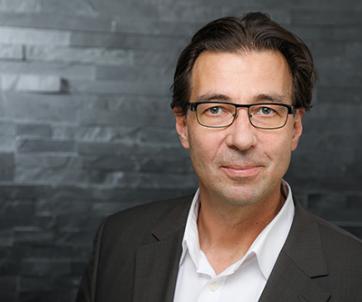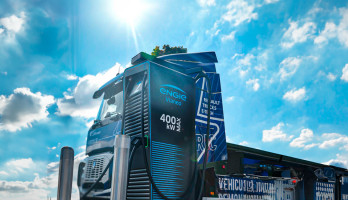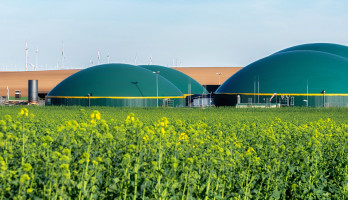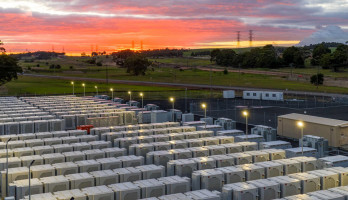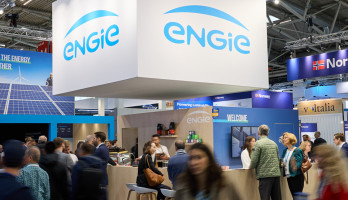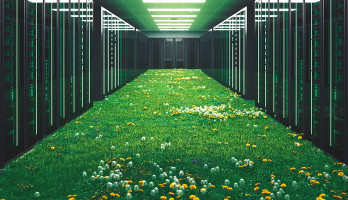
Green heat as a milestone to climate neutrality
Green heat is heat that can be obtained in a climate-neutral manner. There are various options on the market for generating heat with the help of renewable energies: the selection ranges from solid biomass and biogas to solar thermal energy, geothermal energy, and power-to-heat solutions. Which methods of heat generation are currently at the top of the list and what levers need to be tweaked in the individual solutions? Our expert Axel Müller-Wennekers, Technical Director of Project Development at ENGIE Deutschland, gives an overview and outlook in an interview.
Mr. Müller-Wennekers, at what stage are we currently in terms of green heat?
Green heat is one of the major challenges on the way to carbon neutrality. This is due to the fact that climate-neutral fuels for heat generation are either expensive or difficult to obtain, or can only reach customers at considerable expense. As a result, it is precisely in the area of green heat that the greatest potential for optimization lies dormant. With well thought-out concepts and sensible solutions, a big step towards zero carbon could be made, especially in the industrial sector. The thermal part accounts for a significant part of the total energy consumption.
We have various green primary energies at our disposal. What are the current advantages and disadvantages of each option?
In my opinion, solid biomass, for example waste wood in the form of wood chips, is currently the most feasible solution for generating green heat. Wood is CO2-neutral in the balance sheet, because when it is burned it can only release as much CO2 as it bound during the growth phase. Another plus is that attractive subsidies are available for the industrial use of wood. In addition, at the moment we even have negative prices in some cases because scrap wood is available in abundance. The disadvantages are the high investment costs and the enormous space requirement for the installation of such a plant. In addition, of course, the wood must be transported to the place of use, which not only incurs costs, but also an environmental impact due to transportation.
... a problem that does not arise from the production of heat from gaseous biomass. Why is biogas not widely used in industrial heat generation?
The main disadvantage currently lies in the low availability and a correspondingly high biomethane price. It is simply not (yet) an economic alternative in the industrial sector. Many biomethane plants have been decommissioned due to the lack of sufficient EEG funding. Therefore, there has been no price development in the last six to seven years. In the new EEG there is now again a subsidy, which will probably revive the biomethane market a little bit. And biogas is definitely an alternative that needs to be looked at. There is no need for complicated and expensive technical modifications to the system, it is easy to use the gas grid for this. Basically, you burn the same gas as before, but you can declare it differently on the balance sheet.
What options are still available in the green heat sector?
There is of course solar thermal energy, for which there are subsidies. Here, the disadvantages are, on the one hand, the considerable space requirement of a solar thermal system and, on the other hand, the limited temperature range. Solar thermal energy reaches its limits when very high temperatures are required. Higher temperatures are only possible with parabolic technology, which is always adjusted to the position of the sun. The generation of green heat is therefore not continuous.
The problem of the limited temperature spectrum is also present in geothermal energy, right?
That is true. If drilling takes place close to the surface of the earth, for example up to 500 meters, the temperature level is limited and must be supplemented, for example, with a heat pump. In order to generate a temperature level that is truly usable for industrial purposes and to bring up geothermal energy to 120 degrees, it is necessary to penetrate to a depth of 5,000 to 7,000 meters in the ground, which involves high risks and costs.
Which alternative do you think has some potential?
Power-to-heat technology is now fully mature. Generating green heat using the power-to-heat process only makes sense, of course, if the electricity used is also green. The units are not difficult to install and ramp up very quickly; they are roughly comparable to a large immersion heater. The main advantages of power-to-heat are many options in terms of temperature level and an enormously high efficiency: Ninety-nine percent of the electricity goes to heat.
How do you approach customers who want to switch to green heat?
Our first step at ENGIE is always to take stock of the core question: Is it possible to reduce the overall heat generation requirement? Heat recovery is a proven process and is always the first measure in energy efficiency in industry. In the next step we consider: How do we generate the remaining heat demand in a green way? The required temperature level plays a key role in this respect, because with a very high temperature requirement, some processes are excluded from the outset. We also need to look: What is technically possible on site? Is there enough space or are we in the middle of the big city? If the logistical requirements are suitable for the customer, our recommendation is then usually: solid biomass.
What is your conclusion: What does the future hold in the green heat sector?
As a big issue of the future I would see green hydrogen – generally green gases will (have to) play the main role on the way to zero carbon. From the point of view of emissions, green hydrogen is one of the best fuels. But in my estimation, it will take a few more years to be competitive. Until then, we will develop the right and economical solution for our customers with the latest technologies. This must be based on individual circumstances – that is, access to biomass, the gas grid, available space for solar or biomass plants, etc.
My tip: Businesses with a significant heat demand should not only focus on one type of production, but should remain flexible and position themselves broadly. I think that they are best prepared for the future. One goal above all should be important to all of us: That we now jointly push the energy transition everywhere on the business front.
Our Expert
